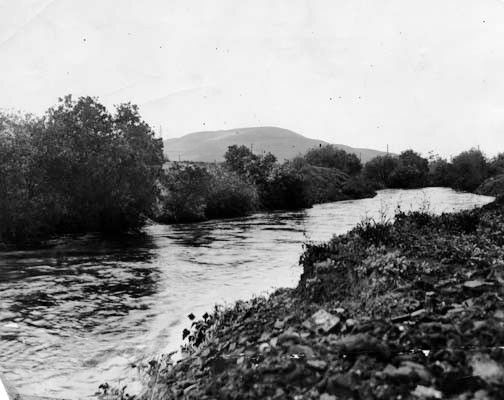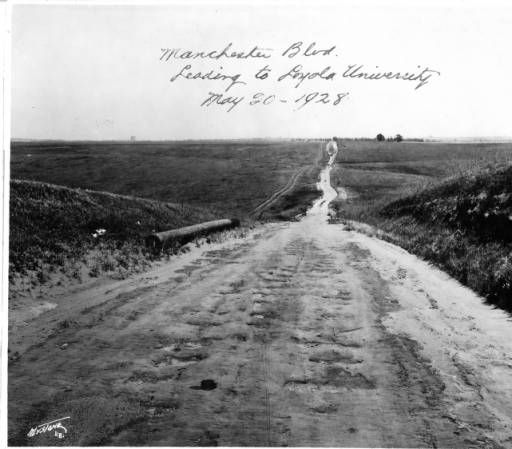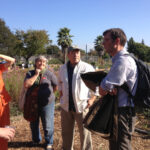
I garden on Kizh lands
The land where I have planted gardens is located on the bluffs above the area where there once was a village called Sa’Angna (1)(6)(7). To the best of my understanding, these lands were taken from the Kizh nation (pronounced Keech)(3).
The Kizh people
When the Spanish colonized the area, they called the Kizh people the Kichireños, which meant “people of the willow houses”(3). The Spanish forced many of the existing people –and from my research it sounds like this included the Kizh– to relocate to the area around the San Gabriel mission, where they were basically enslaved to build the mission (3). Many peoples were folded together under the name Gabrieleño (a Spanish name, which describes them in terms of the mission where they were enslaved) (9). With racist suppression and forced assimilation, including the forced use of Spanish and English rather than native languages, the name Kizh was mostly lost, even to many descendants.
From what I can understand, “Tongva” is a broad name that is embraced by scholars (5) and has only been in use since 1903 (9). Some ancestors of the Kizh people object to the name (3). However the State of California only recognizes the “Gabrieleño” designation (or “Gabrieleño/Tongva”? I’m not sure), and the U.S. federal government refuses to recognize even that. It sounds like Kizh descendants have a choice between embracing the “Gabrieleño/Tongva” names or losing what (little) official recognition they are granted under current law. Meanwhile it sounds like there is conflict over how this plays out today between factions within the grouped “Gabrieleño/Tongva” designation (8).
Land and settlements
When the Kizh people were forcibly relocated, their land was taken. Nearly a hundred years later, a series of woefully inadequate settlements were paid on their land claims. History in the intervening years included “lost” treaties, refusal to properly recognize tribes as official within the eyes of the State of California and the U.S. federal government, and legal processes which undermined the legal claims of the descendants (4).
Which means that, although I “bought” the land my house stands on, and that purchase is perfectly “legal” under the State of California’s property laws, that transaction stands upon a foundation of racism, suppression, injustice, near-slavery, trickery, and taking. Also, from the perspective of many native peoples, the whole idea of “land ownership” is called into question.

What next?
Where does that leave me? As whites who have profited by our predecessors’ actions (I don’t say “ancestors,” because mine didn’t come from around here) and our whiteness, the first thing I need to do is to acknowledge the atrocities. I cannot just motor over them and go on as if nothing happened.
The way I see it, I have a duty to understand the original story (or what can be reconstructed of the original story) about the people who were so unjustly and horribly treated. I have a duty to acknowledge that we are occupying tribal land. I have a duty to politically support any reparations that are being made to descendants. And I have a duty to participate in change, to evolve as our culture changes.
Edit: Several more things we can do (10)
Since the Kizh nation is the oldest of the names I could find, I’ll refer to that until I learn more, in order to do my best to honor the people who once lived on these lands.
images: Ballona Creek circa 1900, photo from SaveBallona.org (13). Manchester Blvd circa 1928, photo from Loyola Marymount Digital Collections.
- (1) transliterated as “Engva” in some sources, such as: Villa, S. (n.d.). Map adapted from The Handbook of the Indians of California by Alfred Louis Kroeber, Smithsonian Institution, 1976. Http://Www.Tongvapeople.Org/. Retrieved November 25, 2020, from http://www.tongvapeople.org/wp-content/uploads/2011/11/villages59.jpg May also have been transliterated as “Waachnga” in other sources, such as Marin, T. (2019, June 19). ArcGIS On-line Map showing Gabrielino/Tongva sites, tribal regions, and California Native landmarks. ArcGIS On-Line Map. https://www.arcgis.com/home/item.html?id=83109d371e194bff8a817d0cb5520092 which places a dropped pin on a slightly different spot than is described in other materials, citing Kroeber, Alfred (1976). Handbook of the Indians of California. Dover Publications. New York, N.Y. ; McCawley, William (1996). The First Angelenos: the Gabrielino Indians of Los Angeles. Malki Museum Press. Banning, CA. ; Reid, Hugo (1852). Los Angeles County Indians. Los Angeles Star 1(41)-2(11) 21 February-24 July. (Reprinted, The Indians of Los Angeles County: Hugo Reid’s Letters of 1852, edited and annotated by Robert F. Heizer. Southwest Museum, Los Angeles, 1968).
- (3) Perez Tautimes Salas, E. (n.d.). Kizh Nation, Gabrieleño Band Of Mission Indians. Kizh Nation. Retrieved November 25, 2020, from https://gabrielenoindians.org/
- (4) Tribal history. (n.d.). Gabrieleno-Tongva Indian Tribe. Retrieved November 25, 2020, from https://gabrielinotribe.org/history/
- (5) for example: Anesi, J., Blackwell, M., Goeman, M., & Teeter, W. (2020, November 9). Mapping Indigenous LA. Mapping Indigenous LA. https://mila.ss.ucla.edu/
- (6) Curwen, S. G. A. T. (2019, May 9). Mapping the Tongva villages of L.A.’s past. Www.Latimes.Com. https://www.latimes.com/projects/la-me-tongva-map/
- (7) ties Sa’Angna to archaeology site CA-LAN-62: Hardin, C., & Beseda, J. (2020, May 7). The Tongva. Santa Monica Bay Audubon Society Blog. https://smbasblog.com/the-tongva/
- (8) ties Sa’Angna to Playa Vista area: May, J. (2004, June 30). Lawsuit Seeks to Stop LA Project after Remains of 300 Gabrieleno Tongva Found. IndianCountryToday.Com. https://indiancountrytoday.com/archive/lawsuit-seeks-to-stop-la-project-after-remains-of-300-gabrieleno-tongva-found-Rj9qSgi_E0iaQNX0eigUKA
- (9) What Are the Original People of Los Angeles County Called? (n.d.). Los Angeles Almanac. Retrieved November 25, 2020, from http://www.laalmanac.com/history/hi05a.php
- (10) Sinclair, S. (2020, November 26). Indian country showed up to beat Trump. How can you show up for Indian country? The Guardian. https://www.theguardian.com/us-news/2020/nov/26/native-american-us-election-education-activism
- (11) I’m still seeking: Martell, Carrie Ann. Sa’angna: Tongva Perspectives on Development of the West Bluffs and Ballona Wetlands. University of California, Los Angeles, 2004. (available at UCLA library, but that will have to wait until after covid-19)
- (12) I’m still seeking: Jurmain, Claudia K. O, my ancestor : recognition and renewal for the Gabrielino-Tongva people of the Los Angeles area. (available at LA Public library)
- (13) McPherson, P., & Jeanette. (2013, July 8). Understanding the Ballona Watershed / Wetlands / Experts’ Views on Ballona Restoration | Grassroots Coalition. SaveBallona.Org Grassroots Coalition. https://saveballona.org/ballona-watershed/watersheds-wetlands-ballona.FAQ.html
You might also like:

Word of the day: Liminality


